Subhash Chandra Bose Jayanti 2025: Honoring Netaji
Updated on : 16 January, 2025
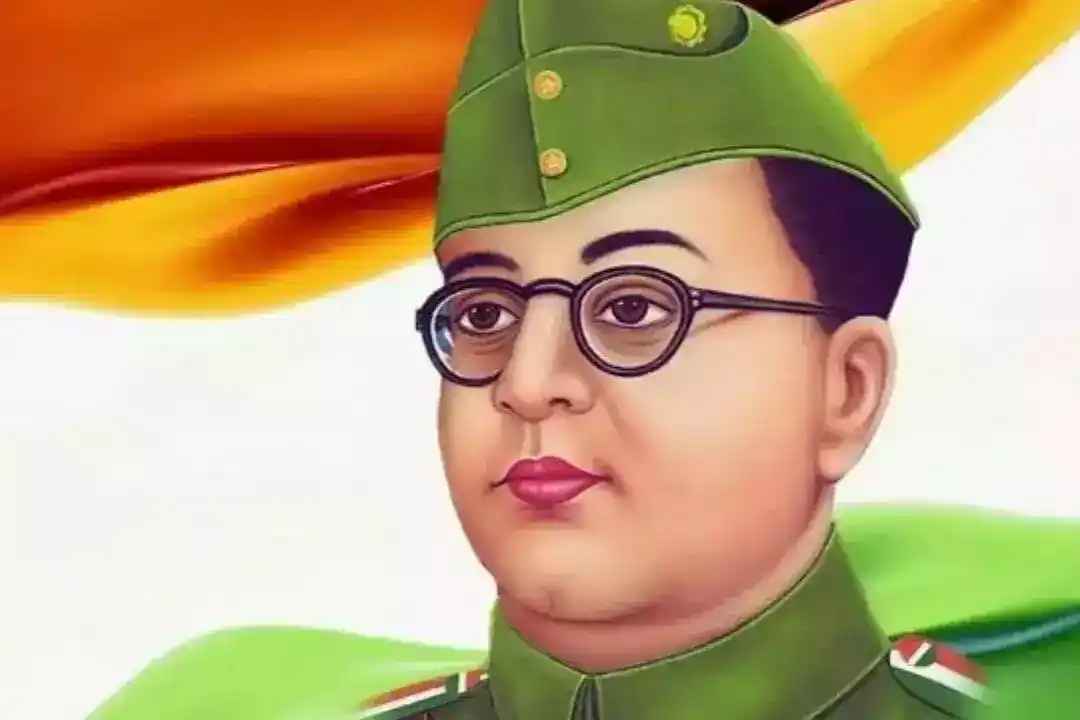
Image Source: Times Now Navbharat
Overview
Subhash Chandra Bose, popularly known as Netaji, was a prominent leader in India's struggle for independence against British rule. A charismatic and dynamic figure, Bose's revolutionary ideas and actions left a lasting impact on the nation. His unwavering commitment to India's freedom, his bold leadership, and his deep sense of patriotism made him one of the most admired and controversial figures in the history of India's freedom movement.
Netaji Subhas Chandra Bose Jayanti
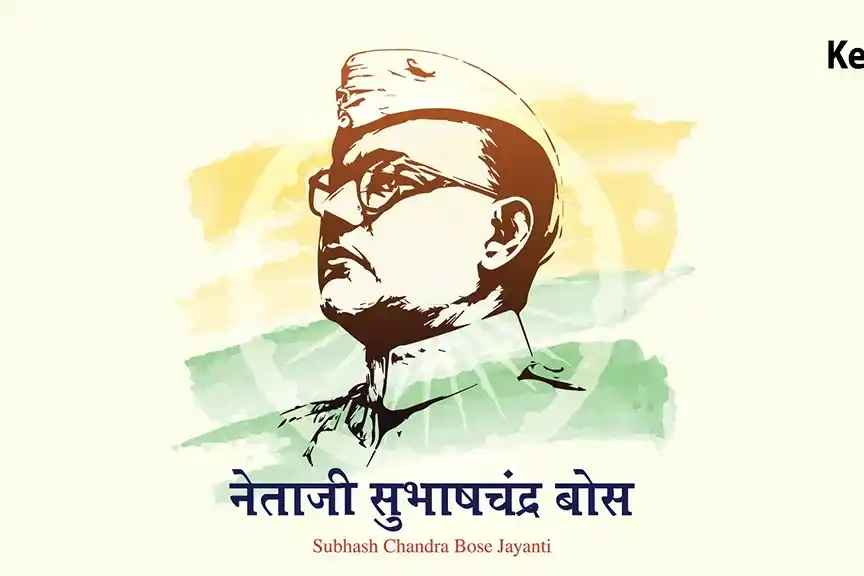
Image Source: Google
-
Netaji Subhash Chandra Bose Jayanti is celebrated on 23rd January every year.
-
It is observed to remember and honour Netaji's vigour as one of India's greatest freedom fighters.
-
The day pays tribute to the birth of a celebrated revolutionary and visionary freedom fighter.
-
Subhash Chandra Bose dedicated his life to fighting for the independence and honour of India.
-
People across India celebrate this day in unity, with some states observing it as a public holiday.
-
Subhash Chandra Bose was a man of great courage and willpower.
-
He was a true son of his motherland, a scholar, patriot, leader, intellectual, visionary, socialist, and warrior.
-
His tireless efforts for India's freedom earned him the title Netaji, the most significant and respected of all time.
How is Subhas Chandra Bose Jayanti Celebrated?
- Subhas Chandra Bose Jayanti is celebrated across India by:
- Garlanding his statues.
- Hoisting the Indian national flag.
- Organizing cultural programs in schools and colleges.
- Public holiday is observed in West Bengal, Tripura, and Odisha on 23rd January.
- Celebrations are nationwide, but some locations hold unique significance.
Notable Places to Visit
1.Netaji Museum, Giddapahar, Kurseong:
- Located in the house of Sarat Chandra Bose, Netaji's brother.
- Netaji spent seven years here and wrote the Haripura session address.
- Now a museum and study centre for Himalayan culture and society.
2.Netaji Bhawan, Kolkata:
- Netaji's residence in Kolkata where he escaped house arrest in 1941.
- Now managed by the Netaji Research Bureau as a museum, library, and archive.
- Houses the Wanderer car used in his escape.
3.INA Museum, Morang:
- Site where Netaji hoisted the first tricolour flag of free India.
- Showcases the achievements of the INA and a giant statue of Bose.
4.Swatantra Sainani Museum, Delhi:
- Located in the Red Fort complex.
- Dedicated to INA heroes subjected to trials.
Significance of Subhas Chandra Bose Jayanti
- Subhas Chandra Bose Jayanti is an Indian national holiday to commemorate Netaji’s birth anniversary.
- Known as Parakram Diwas, the day honors:
- Netaji’s patriotism.
- His unwavering devotion to India’s liberation.
- His indomitable spirit.
Observances
- Participate in a national event organized by the Ministry of Culture.
- Collaborate to plan and encourage notable citizens to observe the event.
- Teach others about:
- Netaji’s life and contributions.
- Values like patriotism, liberation, bravery, and standing against injustice.
Activity Highlight
- Read the book “Letters of Netaji (1926–1936)”, published during the inaugural function of this day in 2024.
Popular Blogs
History of Subhash Chandra Bose Jayanti
Subhash Chandra Bose Jayanti, celebrated on January 23rd, honors the birth anniversary of Netaji Subhash Chandra Bose, a key figure in India's fight for independence. The observance began in 2021 when the Indian government officially designated this day as Parakram Diwas (Day of Valor) to commemorate Bose's contributions.
The first celebration took place on January 23, 2021, coinciding with Bose's 125th birthday, aiming to inspire citizens, especially the youth, to embrace his spirit of resilience and patriotism.
Parakram Diwas
- Announced on January 19, 2021, by the Ministry of Culture as “Day of Courage” to honor Netaji’s sacrifice.
- Formal celebrations began on his 125th birthday with public activities, educational programs, and official ceremonies.
Celebrations of Netaji Subhas Chandra Bose Jayanti 2025
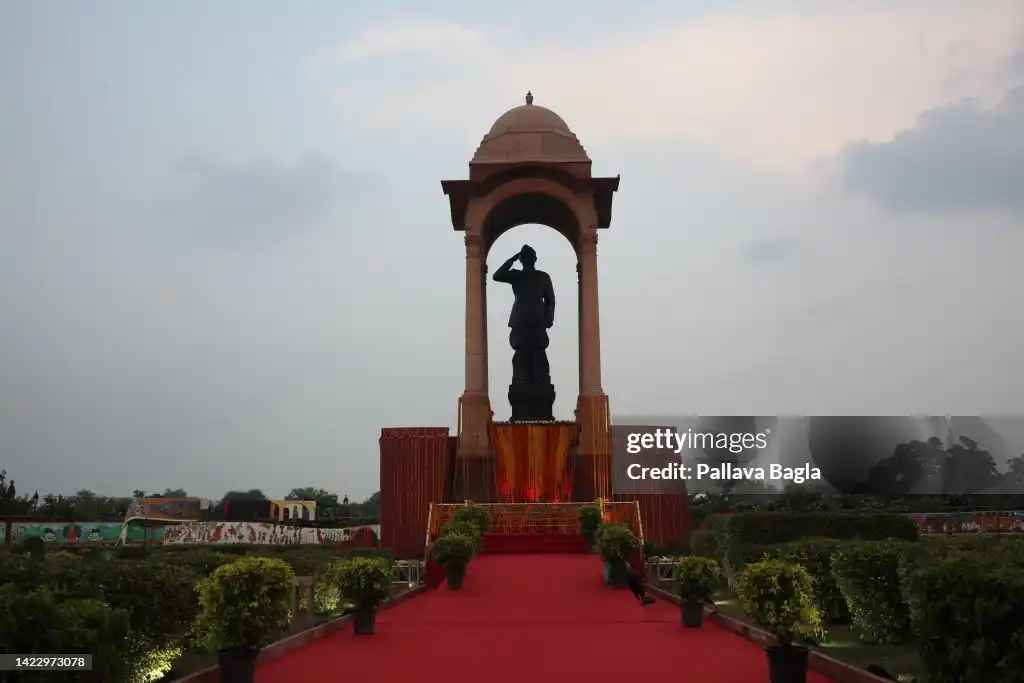
Image Source: Google
Netaji Subhas Chandra Bose Jayanti 2025 was celebrated all over India to remember his contribution to the freedom struggle and nation-building. The celebration witnessed various activities across India, including:
- Seminars and Discussions: To educate the youth about Netaji’s life and achievements.
- Cultural Events: Parades, exhibitions, and patriotic performances celebrating his vision.
- Tributes: Floral offerings at statues and memorials.
- Essay Competitions: Encouraging students to write about Netaji’s contributions.
- Debates and Quizzes: Highlighting the historical significance of his role in the freedom struggle.
- Special Assemblies: Sharing stories of Netaji’s valor and leadership.
| Aspect | Details |
|---|---|
| Date | January 23, 2025 |
| Significance | 128th Birth Anniversary |
| Other Name | Parakram Diwas |
| How it is celebrated | Educational events, parades, cultural programs, and special tributes |
Early Life and Education
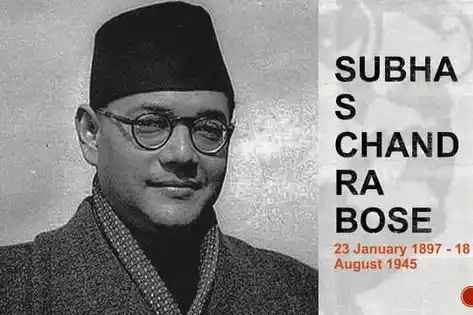
Image Source: Google
Subhash Chandra Bose, widely known as Netaji, was born on January 23, 1897, in Cuttack, Odisha. He was the ninth child of Janakinath Bose and Prabhavati Devi. His upbringing emphasized education and patriotism, shaping his strong sense of duty toward India's independence.
Family Background
- Father: Janakinath Bose, a prominent lawyer and government advocate, instilled values of leadership and service.
- Mother: Prabhavati Devi, a well-educated homemaker, encouraged his intellectual and moral development.
Marriage to Emilie Schenkl
Subhas Chandra Bose married Emilie Schenkl, an Austrian woman, in 1937. Their marriage was kept private due to Bose’s political engagements and the ongoing struggle for India’s independence. Emilie, a stenographer by profession, supported Bose during his time in Europe and played a significant role in documenting his experiences.
Birth of Daughter Anita Bose Pfaff
Bose and Emilie had a daughter, Anita Bose Pfaff, born in 1942 in Austria. Anita grew up in Europe and pursued a career as an economist and professor. Despite never meeting her father, she has actively contributed to preserving his legacy.
Legacy of His Family
Emilie Schenkl remained in Austria after Bose's mysterious disappearance in 1945, raising Anita as a single mother. Over the years, Anita has been vocal about her father’s contributions to India’s independence and has sought official recognition for her mother’s role in his life.
Education
- Early Schooling: Studied at the Protestant European School and Ravenshaw Collegiate School in Cuttack.
- Presidency College: Enrolled in Presidency College, Calcutta, but was expelled in 1916 for his nationalist activities.
- Scottish Church College: Graduated in 1919 with a degree in philosophy.
- University of Cambridge: Traveled to England to prepare for the Indian Civil Services (ICS) exam, which he passed in 1920 but later withdrew in 1921 to dedicate himself to the independence movement.
Bose’s birth in colonial India, along with his education and early activism, laid the foundation for his revolutionary leadership and unwavering commitment to India’s freedom struggle.
Political Career
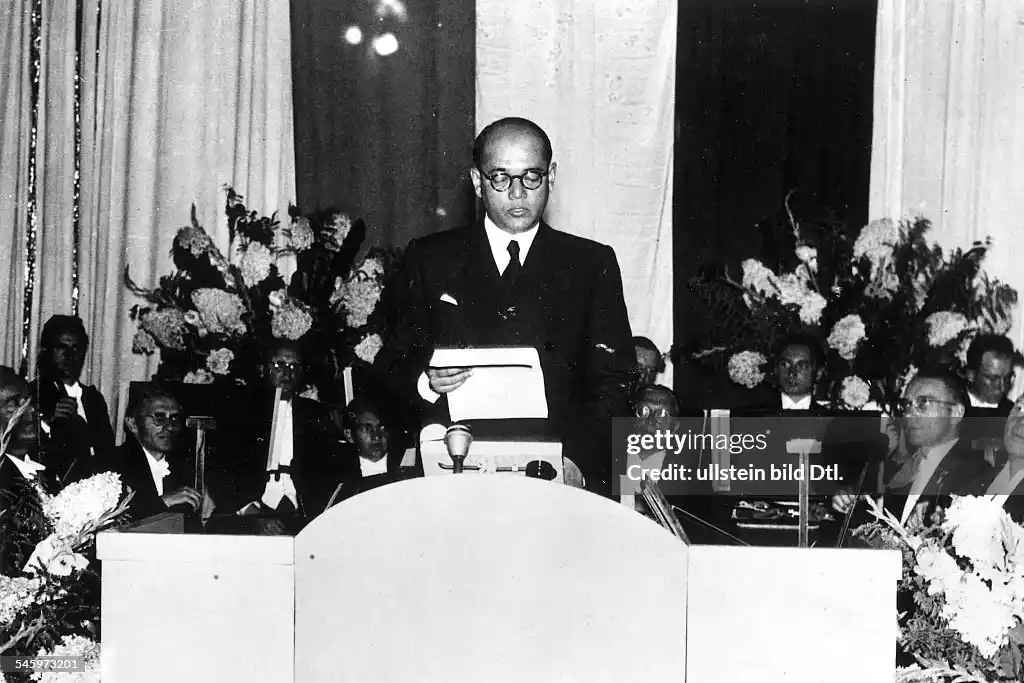
Image Source: gettyimages
Subhash Chandra Bose’s political career was defined by his commitment to India’s independence and his radical approach to achieving it. His leadership in the Indian National Congress (INC) and the formation of the Forward Bloc cemented his legacy as a revolutionary leader.
Involvement with Indian National Congress
- Entry into INC (1921): Inspired by Mahatma Gandhi, Bose joined the INC and quickly rose through the ranks.
- Rise to Leadership: Elected President of INC in 1938 (Haripur) and 1939 (Tripuri), advocating for radical economic planning and industrialization.
- Ideological Differences: Disagreed with Gandhi’s non-violent approach, believing armed resistance was necessary. Resigned in April 1939 due to conflicts over strategy.
Formation of the Forward Bloc
- Establishment (1939): Founded the All India Forward Bloc to unite leftist and radical nationalist factions.
- Objectives: Mobilized workers, peasants, and marginalized groups for a more assertive freedom movement.
- Continued Activism: Organized mass protests and civil disobedience against British rule.
Bose’s political journey showcased his unwavering resolve to secure India's independence through both political and revolutionary means.
Indian National Army (INA)
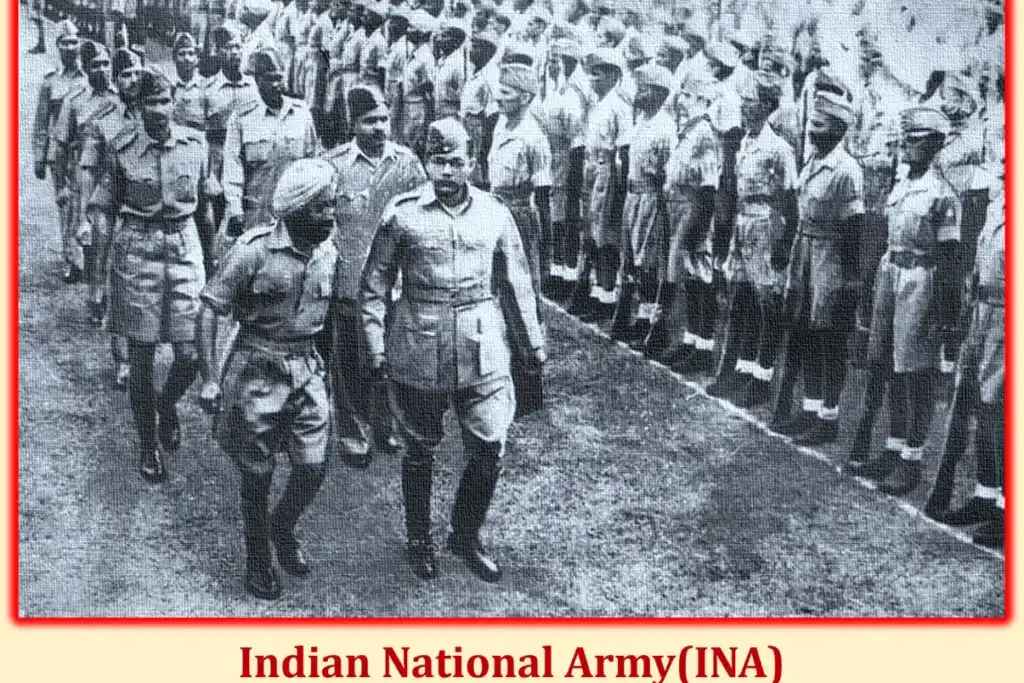
Image Source: Google
The Indian National Army (INA), also known as the Azad Hind Fauj, was formed during World War II under the leadership of Subhash Chandra Bose to fight for India's independence from British rule.
Formation and Leadership
- Initially formed in 1942 by Mohan Singh with Indian prisoners of war.
- Reorganized by Bose in 1943 and declared the military wing of the Arzi Hukumat-e-Azad Hind (Provisional Government of Free India).
Objectives and Operations
- Main goal: Overthrow British rule through armed struggle in collaboration with the Japanese military.
- Notable campaigns: Battles in Burma at Imphal and Kohima.
- Expanded INA by recruiting ex-prisoners and volunteers, setting up training schools.
Challenges and Disbandment
- Faced resource constraints and defeats, ultimately disbanded after Japan's surrender in 1945.
Escape from India
Subhash Chandra Bose’s escape from India on the night of January 16-17, 1941 is one of the most dramatic episodes in his life, known as the "Great Escape."
Planning the Escape
- Faced with house arrest in Calcutta, Bose devised a plan with the help of his nephew Sisir Kumar Bose and freedom fighter Miyan Akbar Shah.
- Disguised to avoid detection, Bose navigated through territories controlled by British forces.
The Journey
- Disguised as a life insurance agent, Bose first traveled to Gomoh Railway Station, then to Peshawar and Kabul.
- In Kabul, local leaders assisted him despite his lack of knowledge of the Pashto language.
Reaching Europe
- After crossing into Afghanistan, Bose secured a transit visa from the Soviet Union, heading towards Europe to seek support from Germany and Japan for India’s independence.
Bose’s escape marked a pivotal moment in his pursuit of freedom for India, leading to his efforts in forming the Indian National Army (INA).
Quotes
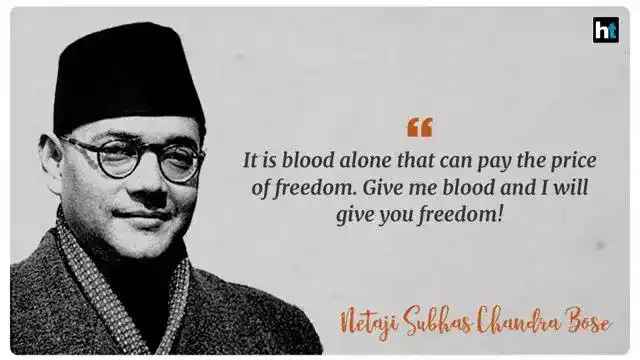
Image Source: Google
-
"Give me blood and I will give you freedom."
One of Bose's most famous and motivational quotes, urging the people of India to sacrifice for the nation's independence. -
"Dilli Chalo" ("On to Delhi!"):
A call to action given by Bose to inspire the Indian National Army (INA) towards the goal of liberating India. -
"Ittehad, Etemad, Qurbani" ("Unity, Agreement, Sacrifice"):
A slogan coined by Bose to emphasize the importance of unity, trust, and sacrifice in the fight for independence.
Mysterious Death
The death of Subhash Chandra Bose remains controversial. Officially, he is reported to have died on August 18, 1945, in a plane crash in Taiwan, after taking off from Taipei. The crash, caused by mechanical failure, resulted in severe burns, leading to his death in a military hospital.
Official Investigations
- Shah Nawaz Committee (1956): Concluded Bose died in the crash and was cremated in Taiwan.
- Khosla Commission (1970): Raised doubts about the authenticity of the ashes, suggesting they might belong to a Japanese soldier.
- Mukherjee Commission (2005): Proposed Bose may have survived and lived as the mysterious figure Gumnami Baba.
Conspiracy Theories
- Death Hoax: Some believe Bose faked his death to escape British authorities and continue his work in secret.
- Assassination: Claims suggest he was killed by rival factions or the Indian government.
- Captivity: Other theories propose that he was captured and held by foreign powers.
Despite the official narrative, many believe Bose could have survived, and the mystery of his death continues to intrigue and fuel speculation.
Legacy and Impact
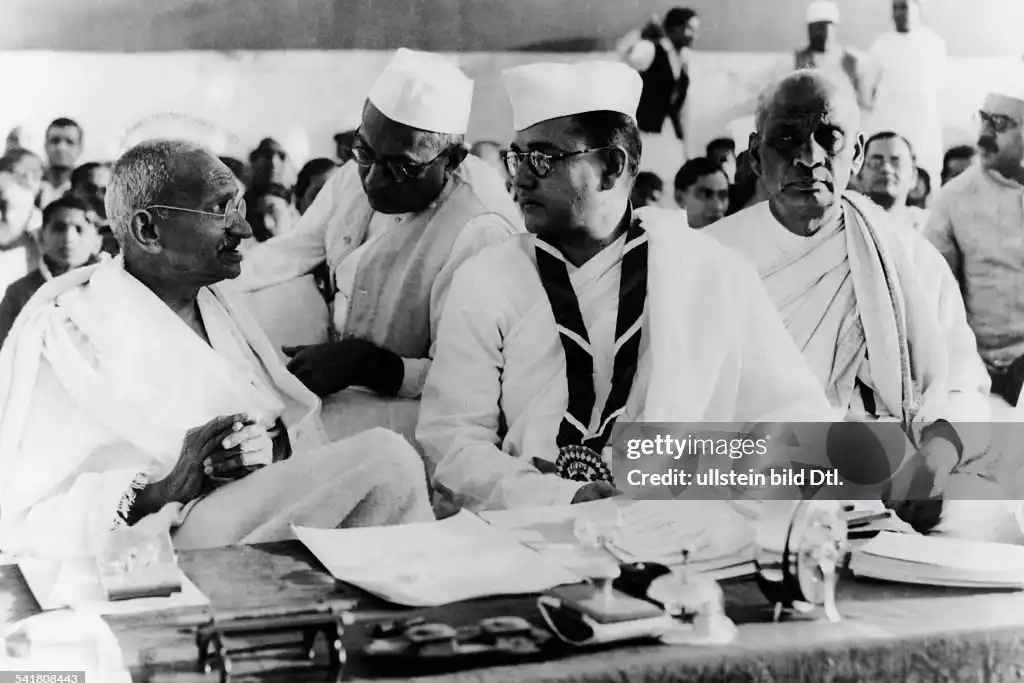
Image Source: gettyimages
Subhash Chandra Bose's legacy is deeply rooted in his unwavering pursuit of India's independence and revolutionary ideologies, inspiring generations with his nationalism and courage.
Revolutionary Approach
- Bose believed in active resistance and armed struggle as the only effective means to challenge British rule, urging a unified effort across all sections of Indian society.
Formation of the Indian National Army (INA
- The establishment of the INA was a significant contribution, mobilizing Indian soldiers and civilians to fight British forces during World War II, symbolizing organized resistance.
Socialism and Economic Reforms
- Advocated for social justice and economic reforms, aiming to create a more equitable society post-independence.
Unity and Patriotism
- Emphasized unity among diverse groups, fostering a collective patriotism that helped build a strong national identity.
International Impact
- Garnered global attention for India’s independence by seeking support from Axis powers during World War II.
Cultural Influence
- Bose's life continues to inspire literature, films, and educational materials, with his famous slogan “Give me blood, and I will give you freedom” resonating as a symbol of justice and self-determination.
FAQ’s
- When is Netaji Subhas Chandra Bose Jayanti 2024 observed?
January 23, 2024 is recognized as Netaji Subhas Chandra Bose Jayanti.
- When was Netaji Subhas Chandra Bose born?
Netaji Subhas Chandra Bose was born on 23rd January 1897.
- When was the Netaji Subhas Chandra Bose Jayanti celebrated first?
The Ministry of Culture observed Netaji Subhas Chandra Bose Jayanti for the first time on January 23, 2021.
- Netaji Subhas Chandra Bose Jayanti 2024 also called?
Netaji Subhas Chandra Bose Jayanti is also known as Parakram Diwas 2024.
- Why is Subhas Chandra Bose Jayanti celebrated?
Subhas Chandra Bose Jayanti is celebrated to honor the birth anniversary of Netaji Subhas Chandra Bose, recognizing his vital contributions to the Indian independence movement and his unwavering commitment to an independent and sovereign India.
- What are some key contributions of Netaji Subhas Chandra Bose?
In addition to organizing the Indian National Army (INA) to combat British rule, Netaji Subhas Chandra Bose promoted radical and direct action and founded the Forward Bloc.
- How did Subhas Chandra Bose’s life end?
Subhas Chandra Bose’s life ended in a mysterious plane crash on August 18, 1945, in Taiwan.














